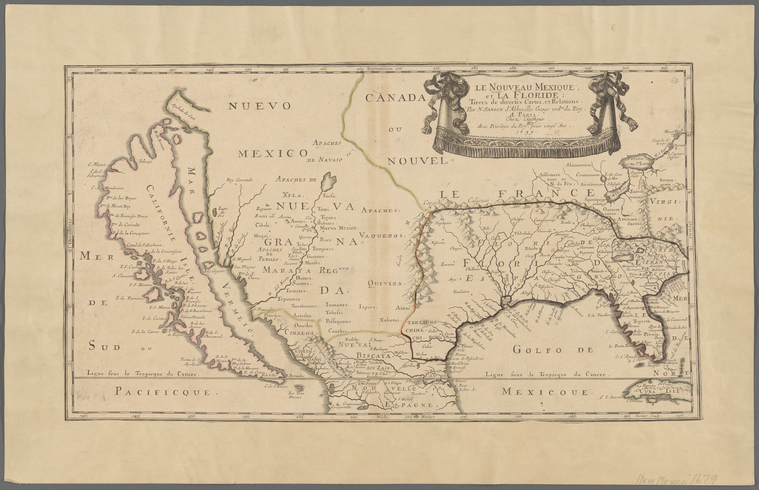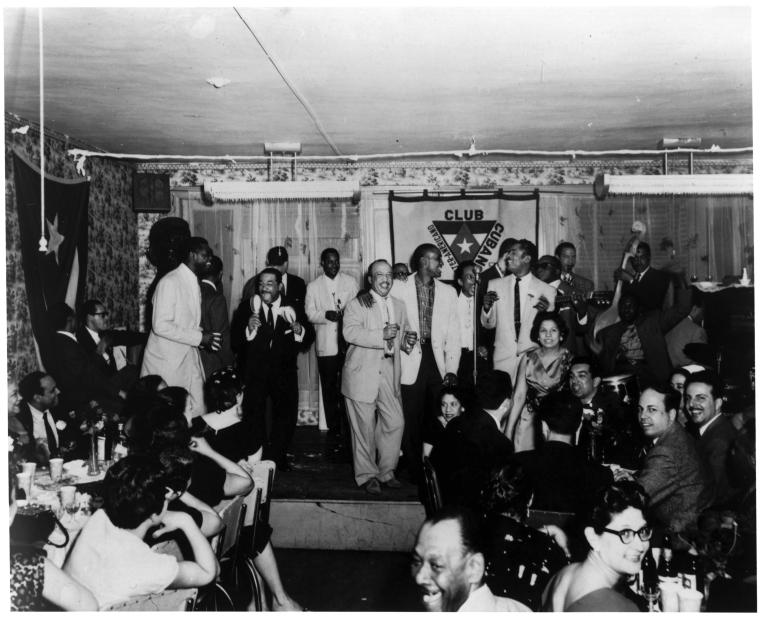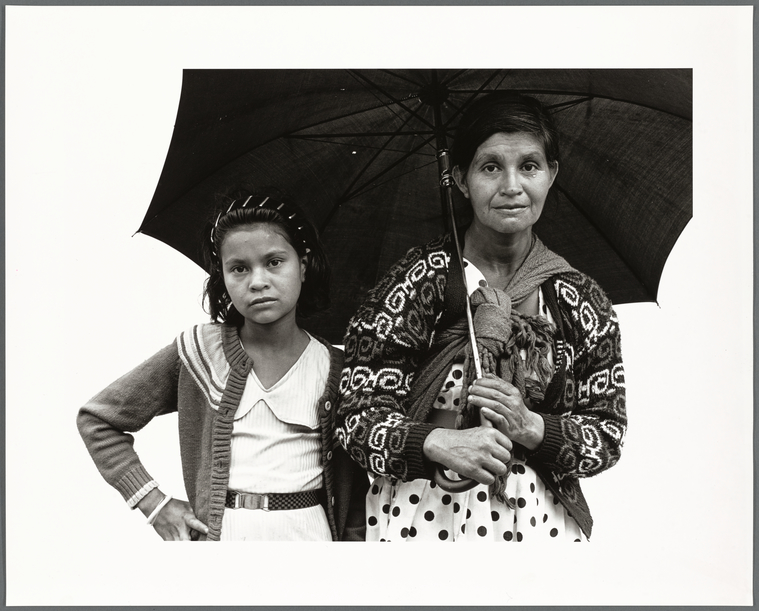World Languages
From Hispanic to Latine: Hispanic Heritage Month and the Terms That Bind Us

Written by: Paloma Celis Carbajal, Curator for Latin American, Iberian, and U.S. Latino Collections in collaboration with Alfredo Gutierrez, Coordinator of Outreach Services.
The history of what we now call the USA is deeply and complexly related to many peoples and their cultures, from the first nations who inhabited this continent to the Europeans who conquered it in the 16th century. Wasn’t that the 17th century? —you ask. Well, not really. The oldest cities established by Europeans are San Juan, Puerto Rico in 1521 and St. Augustine, Florida, in 1565, several decades before the arrival of the Mayflower. These cities were established by Spanish conquistadors who claimed a good portion of this continent for Queen Isabella I of Castille. For over 300 years, the Spanish Empire’s colonies in the Americas extended from what is now northern California to what are present day Chile and Argentina. The consequence of the clashes and later syncretisms between the Spanish, enslaved Africans, and the various indigenous cultures and civilizations previously established in these lands resulted in a vast diversity of what are now referred to as Hispanic cultures.
In order to pay tribute to the historical and contemporary contributions of generations of Hispanic Americans to our nation and society, President Lyndon Johnson first proclaimed a Hispanic Heritage Week in 1968, which was to take place around September 15 and 16, the dates in which several Central American countries and Mexico celebrate their independence from Spain. It is difficult to ignore that this tribute was born in the midst of the civil rights movement and seems to be a gesture for a more inclusive society. Twenty-one years later, President George H.W. Bush extended the week to an entire month from September 15 to October 15. In his Presidential Proclamation, it is clear that the beginning and end dates of this commemorative month were chosen to underscore that the Hispanic contributions to the U.S. can be traced back to the early times of the Spanish conquest, which makes obvious the reason why Hispanic Heritage Month would include October 12:
"Ever since Hispanic explorers discovered the vast, uncharted territory of the New World nearly half a millennium ago, men and women of Spanish and Latin American descent have made major contributions to the development of our country." —G.H.W. Bush, Proclamation 6021, September 14, 1989.
But, by now you might be wondering, isn’t the term used now Latinos or Latinx? The fact that there are several terms to identify people with ancestry from Spanish speaking territories or from countries south of the U.S.-Mexican border is a sign of the richness and depth of these cultures. These words are pan-ethnic terms of identification that encompass many races.
To better understand them, let’s start with the term assigned to cluster the countries south of the United States. The notion of a unified American region independent from Spanish rule was shared among many independentists such as Simón Bolívar and Vicente Guerrero, and later José Martí. However, the compound noun Latin America, América Latina or Latinoamérica in Spanish, originated in the 19th century. As Torres Martínez explains, some scholars claim it was coined by French intellectuals from the time of Napoleon III. This could be interpreted as representative of their expansionist aspirations into the Americas since they were using a term that departed from the Spanish colonial past. Rather than refer to Spanish America (Hispanoamérica or América Hispana), the term Latin America unified the newly formed nations by emphasizing languages that are traced back to Latin, the language of the Roman Empire. Other scholars suggest the term originated with intellectuals from Puerto Rico, Dominican Republic, Colombia, Chile, México, Perú, Argentina, or Brazil. Francisco Bilbao (Chilean) and José María Torres Caicedo (Colombian) were the first to use the term, in clear resistance to the Monroe Doctrine and the U.S. expansionism into the Americas.
In the 20th century, terms such as Mexican-American, Dominican-American, Honduran-American, and Cuban-American, among other hyphenated terms, entered into common usage in the U.S. The broader term Hispanic, which refers to both who live in Spanish-speaking countries as well as people in the U.S. of Spanish-speaking ancestry, came to prominence in the late 1960s. After President Lyndon B. Johnson declared Hispanic Heritage Week in 1968, Congress passed Public Law 94-311 in 1976, which mandated the gathering of information and statistics on U.S. residents with origins from Spanish-speaking countries. It wasn’t until 1980 that the term Hispanic first appeared on the U.S. Census. Hispanic, at least for a while, seemed to be the de facto term when collectively referring to people with heritage from a Spanish-speaking country in Latin America.
In the 1990s, however, there was a growing backlash against the term “Hispanic.” Critics of the term thought it was too centered on Spain, and the history of colonialism, instead of the people from Latin American countries. In 1997, the U.S. Office of Management and Budget issued a directive adding the term Latino to government publications, and it appeared on the 2000s Census as Hispanic/Latino—an interesting combination given that Latino excludes Spaniards but includes Brazilians, who have Portuguese heritage rather than Spanish.

There are a few labels that fall outside of these conventions, not being focused on origins but instead on the diasporic and resistant nature of living in the U.S. but not being fully wanted here. Two of these terms, Nuyorican and Chicano, were reclamations of derogatory terms used towards Puerto Ricans in New York City and Mexican-Americans, respectively. Wrapped in a struggle for political visibility, these terms have their own trajectories and histories that are often parallel to the history of the terms Hispanic and Latino, with many choosing Chicano/Chicana or Nuyorican as an alternative between the country-of-origin labels (Mexican-American and Puerto Rican) and the pan-ethnic labels of Hispanic or Latino.
Now, the term Latino also has its long history of being challenged and the attempts to change the term. In the 2000s and 2010s, the global movement for gender equity brought about the rise of “they” pronouns, and along with it the question of a gender neutral “Latino.” With the Census-approved term being gendered mandatorily due to the rules of the Spanish language, activists and academics sought out a new term. Latino/a was the first alternative, and while that eliminated the male default, it still did not leave room for a gender neutral option. Latin@ followed it, successfully being gender neutral but being hard to pronounce in either English or Spanish. Finally, by the mid two-thousands, the term Latinx had become more widely used as a pan-ethnic label. As a recent New Yorker article mentions, research shows it became even more common after the tragic 2016 mass shooting at the LGBTQ nightclub Pulse in Orlando, as companies and celebrities took to social media to mourn and honor those who lost their lives. It is impossible to separate the term Latinx and the conversations happening around inclusivity and intersectionality, and it is one term in a long lineage that attempts to unify people with Latin American heritage.
However, according to the Pew Research Center, most Hispanic people have not heard of the term Latinx, and an even smaller percentage actually use the term. Additionally, in the 15 years the Pew Research Center has collected data about self-signifiers, most people have preferred these “country of origin” labels rather than the pan-ethnic labels. Choosing their more personal identities, as someone from Mexico or Peru or Chile, over any term that is focused on representing a united U.S. experience.
Some people have challenged “Latinx,” saying it's an anglicization, as well as a word that is impossible to pronounce in Spanish. In response to that criticism, advocates for the term have begun to move in the direction of a new term: Latine. Since some words in Spanish have an “e” at the end and can be either masculine or feminine (estudiante, for example), the word Latine can also be used in gender neutral fashion. While it's very early on in the lifespan of this new term, one can only guess where it will go. On the 2020 Census, Hispanic/Latino was the option once again. Who knows what it will be on the 2030 census?
At the end of the day, Hispanic Heritage Month and the term Hispanic on its own is an important part of U.S. history and is the origin of these types of conversations. Without the grassroots activism that led to the government acknowledging and celebrating Hispanic heritage, there would not be room for new terms to come about and attempt to move the conversation forward. This month, which many celebrate as Latino/a/x Heritage Month, is a great opportunity for us, Hispanics, Latinos, Latinas, Latinx, Latines, Latin Americans, to share knowledge about the vast diversity and richness of our cultures and legacies. Many of these resources can now be found online.
The New York Public Library has a vast array of resources in English, Spanish, Portuguese, and some indigenous languages, waiting for you to explore. Our collections range from Latin American incunabula (the earliest books printed in the Americas) all the way to contemporary literature, history, comic books, zines, as well as scholarly studies by thousands of Latinx and Latin American authors worldwide in print and electronic formats. Maybe in that research, you’ll find a term that feels right for you.
Resources consulted for this blog post:
Aldama, Frederick Luis. “Introduction.” The Routledge Companion to Latina/o Popular Culture. New York: Routledge, 2016.
Caminero-Santangelo, Marta. ”Latinidad.” The Routledge Companion to Latino Literature. Suzanne Bost and Frances R. Aparicio (Eds.). Abingdon: Routledge, Taylor & Francis Group, 2013. ProQuest.
Gibson, Carrie. El Norte. The Epic Forgotten Story of Spanish North America. New York: Atlantic Monthly Press, 2019.
González, Juan. Harvest of Empire. A History of Latinos In America. New York: Penguin, 2011.
Mochkofsky, Graciela. “Who Are You Calling Latinx?” The New Yorker. Sep. 5, 2020.
Mora, Christina G. Making Hispanics. How Activists, Bureaucrats, and Media Constructed a New American. Chicago: The University of Chicago Press, 2014.
“National Hispanic Heritage Executive and Legislative Documentation at the Library of Congress.” Library of Congress.
Noe-Bustamante, Luis; Mora, Lauren, and Lopez, Mark Hugo. “About One-in-Four U.S. Hispanics Have Heard of Latinx, but Just 3% Use It.” Pew Research Center Hispanic Trends, Aug. 2020.
Ortiz, Paul. An African American and Latinx History of the United States. Boston: Beacon Press, 2018.
Scharrón, María R. and Alja, Alan A. “The Case for ‘Latinx’: Why Intersectionality Is Not a Choice.” Latino Rebels, Dec. 2015.
Torres Martínez, Rubén. “Sobre el concepto de América Latina ¿Invención francesa?” Cahiers d’études romanes, 32, 2016. URL : http://journals.openedition.org/etudesromanes/5141
“National Hispanic Heritage Month.” U.S. Government.
Read E-Books with SimplyE
 With your library card, it's easier than ever to choose from more than 300,000 e-books on SimplyE, The New York Public Library's free e-reader app. Gain access to digital resources for all ages, including e-books, audiobooks, databases, and more.
With your library card, it's easier than ever to choose from more than 300,000 e-books on SimplyE, The New York Public Library's free e-reader app. Gain access to digital resources for all ages, including e-books, audiobooks, databases, and more.
If you don’t have an NYPL library card, New York State residents can apply for a digital card online or through SimplyE (available on the App Store or Google Play).
Need more help? Read our guide to using SimplyE.



Comments
Great blog entry!
Submitted by Jesus Alonso-Re... (not verified) on October 2, 2020 - 4:11pm
Gratitude
Submitted by Amanda Rosas (not verified) on October 3, 2020 - 3:56pm
Enjoyed the blog
Submitted by Lamar Moore (not verified) on October 16, 2020 - 12:39pm